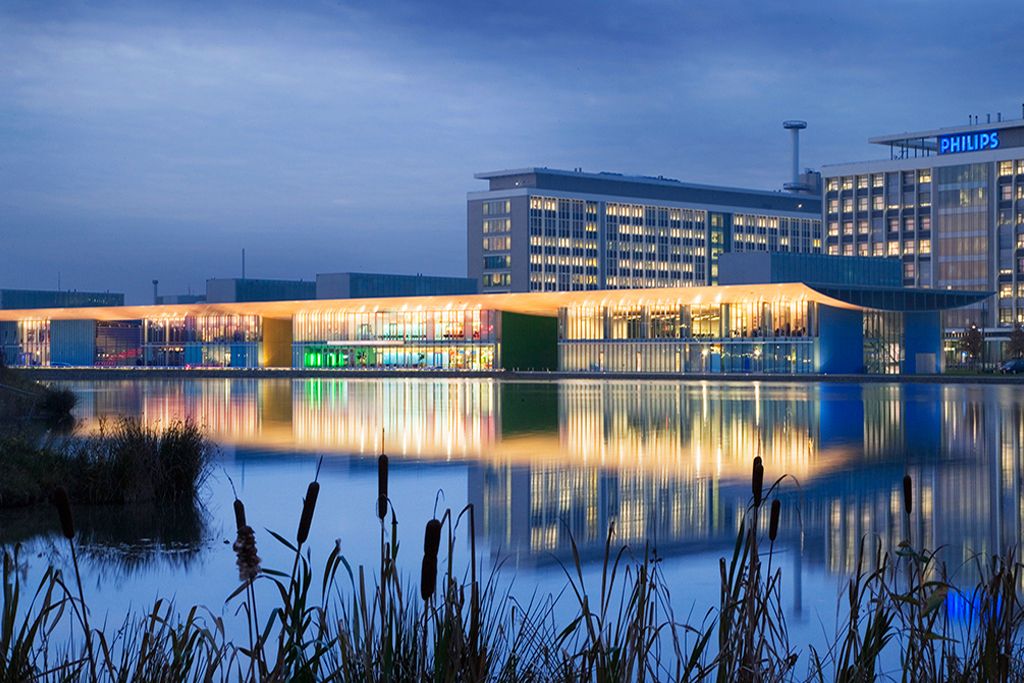
If you walk around the High Tech Campus of Eindhoven, you can sense the energy. So says Mayor John Jorritsma of Eindhoven. As a mere ‘alpha’, he felt like one of the few laypersons in the technology field present in the hall of High Tech Next, a free information day in Eindhoven. Or so it seemed. But that didn’t make him any less enthusiastic.
Jorritsma is well aware of the fact that the world’s largest manufacturer of chip machines, ASML, is located in the neighboring town of Veldhoven. ASML is a breakaway from the electronics giant Philips, which has traditionally provided an important stimulus to economic growth in the region around Eindhoven.

Growth is greater than elsewhere
“Over the past year, I’ve made trips to China, South Africa, and Prague. There they talk about the ‘wonders of Eindhoven””, says Jorritsma. But what exactly is meant by ‘wonders’?
In the first place that means the economic growth, he said. It is much greater in the Eindhoven region than in the rest of the Netherlands. A survey of the Brainport Eindhoven shows that in 2018 it was 3.3 %, compared to 2.6 % in the rest of the Netherlands. Industry and SMEs combined provide the highest regional added value in the Netherlands, with €8.5 billion in 2017. By way of comparison – in that year, this amounted to €6.9 billion in Rotterdam and €4.5 billion in Amsterdam.

One quarter of R&D investments in Eindhoven
Secondly, according to Jorritsma, Eindhoven is the most innovative city in Europe. He bases this ranking on a report by the European Commission issued last year. At least this is true for European cities with a similar number of residents (226,740 in 2017). Almost a quarter of all private investments in R&D in the Netherlands are made in Eindhoven. This is significant, of course. As Eindhoven is a relatively small city with a very high proportion of companies specializing in high tech. Such as Philips, ASML and the semiconductor manufacturer NXP. A total of 12,000 highly skilled professionals work in the region, Jorritsma said.
However, in order to safeguard that wonder, the High Tech Campus’ strategy must be revised. This is what Business Development Director Cees Admiraal stated during the opening of the event. Two years ago, he had the uneasy feeling that digitization was not singled out as part of the strategy to develop the High Tech Campus. That’s what they’re currently about to change.
A leap in technological development
The development of digital products such as AI and digital platforms is a prerequisite for remaining a leading innovation region in the future. This is what he found after he carried out a study into the reasons behind Eindhoven’s greatest growth in technological development the past years. This took place after technology based on mechanics shifted to technology based on mechatronics. The latter being a combination of various technical disciplines such as mechanical engineering, measurement and control technology and electronics. Digitization should now be added to this.

AI and digital platforms are the future
The presentation by Clara Otero (System Director of System Innovation at semiconductor manufacturer NXP) later in the day once more made it clear what he was talking about. Otero showed how AI-controlled electronics systems will shape the car of the future. The combination of AI, digital platforms and electronics is leading to an enormous change for society. Therefore, it is fairly logical that the High Tech Campus would like to have a separate strategy for this.
The details of the future strategy for the High Tech Campus are reflected in the advent of various laboratories such as the 5G lab that telecom companies VodafoneZiggo and Ericsson will be opening there in January. There are also plans for an indoor and outdoor laboratory for the local area.
Are we climate-proof?
Aside from digitization, there is also the ambition to become the most sustainable High Tech Campus in the world by 2030. People have taken to the streets for the sake of the climate,” said marketing manager Paul van Son from the High Tech Campus. That’s why sustainability must also be part of our strategy for the future.

